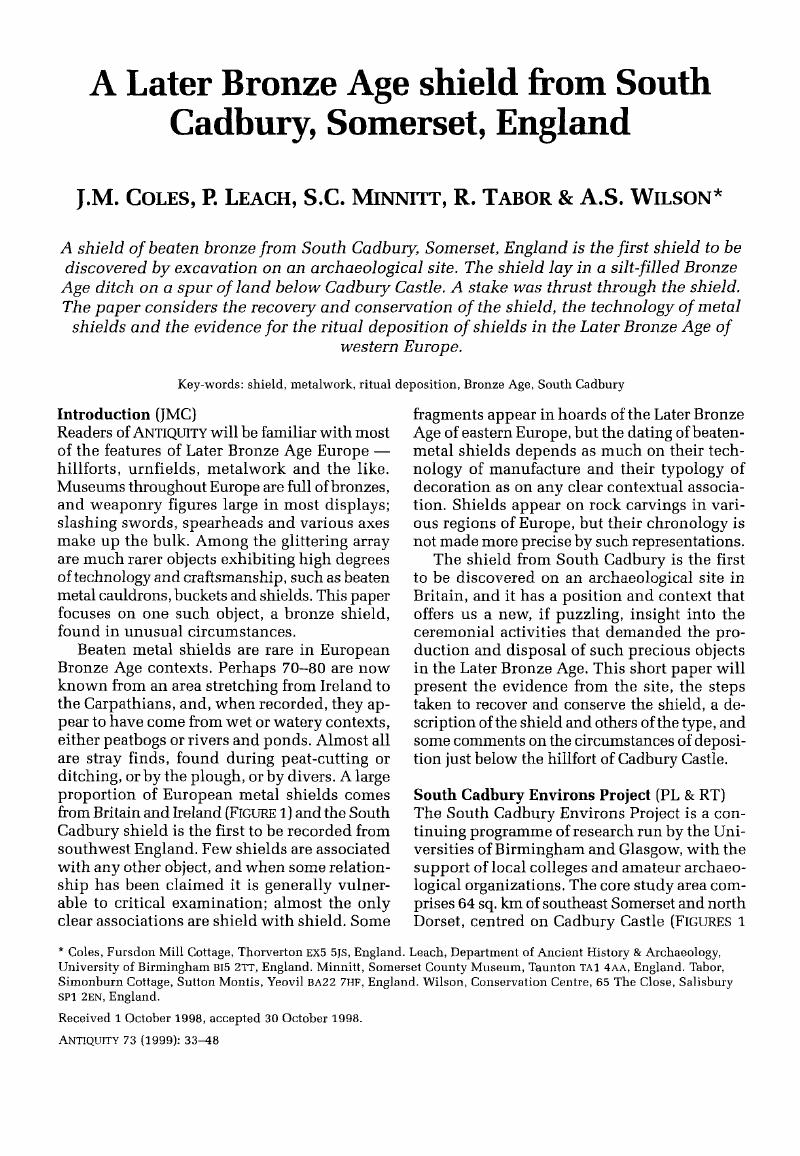Crossref Citations
This article has been cited by the following publications. This list is generated based on data provided by Crossref.
Ambers, J.
and
Bowman, S.
2003.
RADIOCARBON MEASUREMENTS FROM THE BRITISH MUSEUM: DATELIST XXVI.
Archaeometry,
Vol. 45,
Issue. 3,
p.
531.
Molloy, Barry
2009.
For Gods or men? A reappraisal of the function of European Bronze Age shields.
Antiquity,
Vol. 83,
Issue. 322,
p.
1052.
Anderson, Kate
2011.
Slashing and thrusting with Late Bronze Age spears: analysis and experiment.
Antiquity,
Vol. 85,
Issue. 328,
p.
599.
Bradley, Richard
2019.
The Prehistory of Britain and Ireland.





